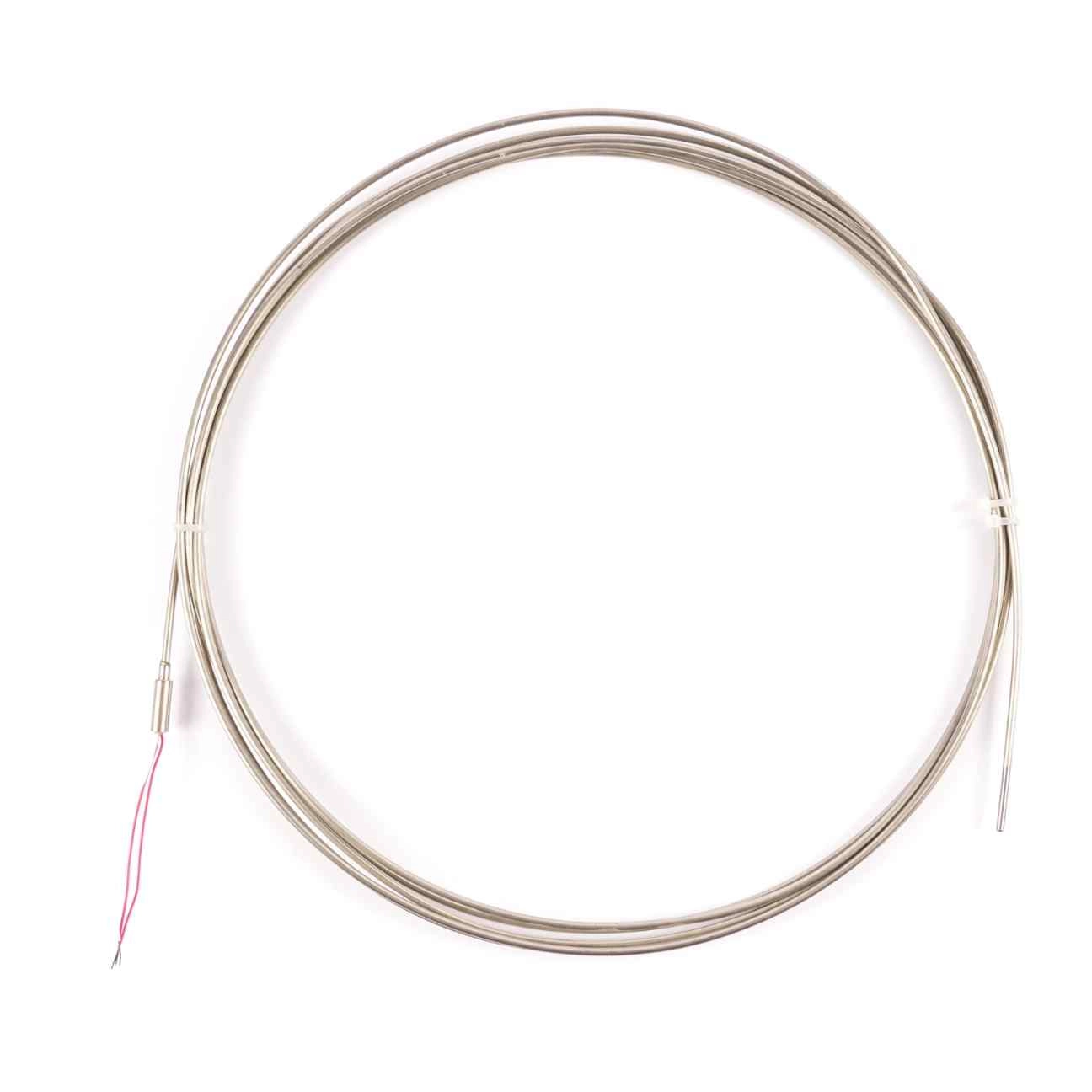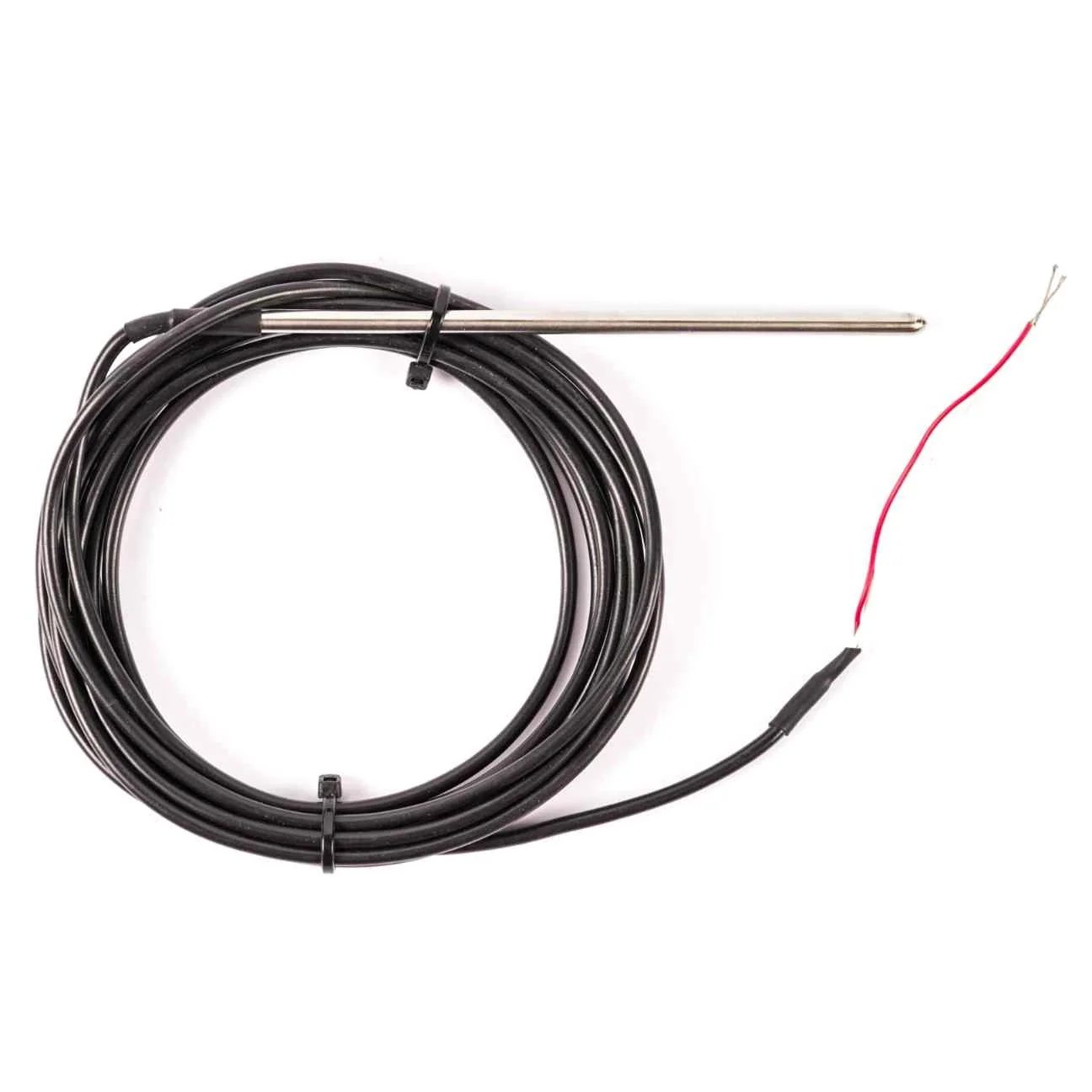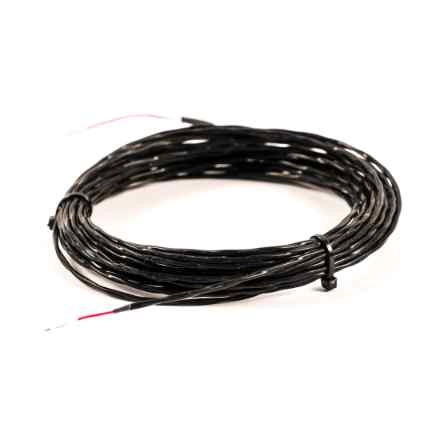What Is A PT1000 Temperature Sensor?
TL;DR — Quick Summary
A PT1000 temperature sensor is a type of Resistance Temperature Detector (RTD) that uses platinum’s stable resistance properties to measure temperature accurately. It has a nominal resistance of 1000 ohms at 0°C, offering higher sensitivity than PT100 sensors. PT1000 sensors operate over a wide temperature range (typically -200°C to +600°C) and are widely used across industries such as HVAC, automotive, and scientific research. Calibration is crucial for ensuring accuracy, involving comparison against certified temperature standards.

How Does A Pt1000 Temperature Sensor Work?
A Pt1000 temperature sensor measures temperature by detecting the change in electrical resistance of its platinum sensing element. As temperature rises, the resistance increases in a predictable and nearly linear manner. This change is measured by an external device, such as a transmitter or temperature controller, which converts resistance into an accurate temperature reading. The high resistance value of Pt1000 sensors enhances measurement resolution, making them ideal for precision applications.
PT100 vs PT1000: What’s the Difference?
- PT100: 100 ohms at 0°C
- PT1000: 1000 ohms at 0°C
The tenfold increase in resistance in PT1000 sensors means better accuracy, especially useful in environments with electrical noise or where sensor cables are long.
How to Check a PT1000 Sensor
To verify a PT1000 sensor’s functionality:
- Disconnect the sensor from any circuit or power supply.
- Use a calibrated precision multimeter to measure resistance at a known temperature.
- Compare the measured resistance against a standard PT1000 temperature-resistance table or chart.
- Ensure the value matches expected resistance for that temperature, indicating the sensor is operating correctly.
Temperature Range of PT1000 Sensors
PT1000 sensors typically operate within a wide range:
- Minimum: Around -200°C (-328°F) — suitable for cryogenic applications
- Maximum: Up to approximately +600°C (1112°F) — ideal for many industrial processes
This versatility makes PT1000 sensors suitable for applications from extreme cold research to high-temperature manufacturing.
Calibration Process for PT1000 Sensors
Calibrating a PT1000 sensor is essential to maintain accurate, traceable temperature measurements. Follow these precise steps to perform a reliable calibration:
What You’ll Need:
- A calibrated temperature source (e.g., dry-well calibrator, temperature bath, or fixed-point cell) traceable to national standards
- A high-accuracy ohmmeter or resistance measuring device
- The PT1000 sensor to be calibrated
- A reference temperature-resistance table specific to your PT1000 sensor
- Calibration documentation (forms or software)
Step 1: Prepare the Equipment and Environment
- Confirm that all calibration instruments are themselves calibrated and traceable.
- Clean the sensor terminals and inspect for any damage.
- Set your temperature source to the initial calibration point (e.g., 0°C) and allow it to stabilise fully.
Step 2: Connect the Sensor
- Disconnect the PT1000 sensor from any devices or circuits.
- Connect the sensor leads securely to your ohmmeter.
- Use a 4-wire connection if possible to minimise lead resistance errors.
Step 3: Measure Resistance at the First Calibration Point
- Once stable, measure the sensor’s resistance.
- Record the exact resistance and the calibration temperature.
Step 4: Compare with Reference Values
- Look up the expected resistance for the temperature from the PT1000 reference table.
- Calculate any deviation between measured and expected values.
Step 5: Repeat for Multiple Temperature Points
- Change the temperature source to other points within the sensor’s operating range (e.g., 100°C, 200°C).
- At each point, wait for temperature stabilisation, measure resistance, record data, and calculate deviations.
Step 6: Calculate and Apply Corrections
- If deviations are outside acceptable tolerance, calculate linearisation or offset correction factors.
- Apply these corrections through instrumentation or software.
Step 7: Document the Calibration
- Log all measurements, deviations, corrections, environmental conditions, and operator details.
- Maintain records for traceability and quality control.
Step 8: Final Verification and Reinstallation
- Perform a final check at a key temperature to confirm calibration accuracy.
- Reinstall the sensor into the measurement system.
- Label the sensor with calibration date and next due date.
Tips for Best Results:
- Always allow enough time for temperature stabilisation.
- Avoid touching the sensor during measurement to prevent heat transfer.
- Calibrate in a stable ambient environment.
- Use 4-wire measurement to eliminate lead resistance errors.
Advantages of PT1000 Sensors
- High Sensitivity and Resolution: Due to higher nominal resistance
- Accuracy and Stability: Excellent over wide temperature ranges
- Compatibility: Works with standard instrumentation
- Durability: Resistant to corrosion and chemicals
- Low Self-Heating: Reduces measurement error in dynamic applications
Disadvantages of PT1000 Sensors
- Higher Initial Cost: Compared to some alternatives
- Calibration Required: Needs specialised equipment and procedures
- Mechanical Vulnerability: Sensitive to vibration and stress
- Lead Wire Resistance: Can affect accuracy in long cable runs
- Limited Instrument Availability: In certain industries
Are PT100 and PT1000 Sensors Interchangeable?
No. Their differing nominal resistance means instruments must be matched to the sensor type to avoid inaccurate readings.
Accuracy of PT1000 Sensors
When properly calibrated, PT1000 sensors deliver high accuracy, often within a few tenths of a degree Celsius, suitable for critical measurement needs.
PT1000 RTD Applications
Pt 1000 sensors are used in a variety of industries. Below we have listed some of the most popular industries for pt1000.
• HVAC Systems:
• Laboratory and Scientific Research
• Automotive and Aerospace
• Environmental Monitoring
• Medical Devices
• Food and Beverage Industry
• Energy and Power Generation
PT1000 RTD Temperature Range
- Minimum: Approximately -200°C (depending on sensor design)
- Maximum: Up to about 600°C (varies with construction)
What Are The Main Differences Between Pt1000 And Other Temperature Sensors?
The Pt1000 sensor differs primarily in its nominal resistance value—1,000 ohms at 0°C—compared to the 100 ohms of a Pt100 sensor. This higher resistance provides greater sensitivity and improved signal-to-noise ratio, making Pt1000 sensors especially suitable for applications requiring precise temperature measurement over longer cable runs. Compared to thermocouples, Pt1000 sensors offer better accuracy and stability but operate effectively within a more limited temperature range, typically up to 600°C.
What Should I Consider When Choosing A Pt1000 Temperature Sensor For My Project?
When choosing a Pt1000 temperature sensor, consider factors such as the operating temperature range, environmental conditions, and sensor accuracy requirements. Also, evaluate the sensor’s construction material and sheath type for chemical resistance and durability. Cable length and connection type are important for ensuring signal integrity. At Peak Sensors, we provide customised Pt1000 sensors to suit your specific industrial or laboratory needs.
FAQs
What does PT1000 stand for?
“PT” refers to platinum, and “1000” is the sensor’s nominal resistance in ohms at 0°C.
Can I use a PT1000 sensor instead of a PT100?
No. PT100 and PT1000 sensors have different resistance values and require compatible instrumentation.
How often should I calibrate my PT1000 sensor?
Calibration is generally recommended annually or as specified by your application or standards.
What tools do I need for calibration?
A calibrated temperature source (e.g., temperature bath), precision ohmmeter, and reference tables.
Are PT1000 sensors suitable for extreme temperatures?
Yes. They typically operate reliably between -200°C and +600°C.
Conclusion
PT1000 temperature sensors are a trusted, accurate solution for demanding temperature measurement applications. Their platinum construction, high resistance, and wide operating range deliver superior sensitivity and stability. While they require careful calibration and handling, these sensors offer reliable performance across diverse industries, from pharmaceuticals to aerospace. Understanding their operation, differences, calibration needs, and benefits will help you maximise their effectiveness and maintain precise temperature control.
View Our Resistance Thermometers
If you want to order a temperature sensor or you are unsure exactly what you need, get in touch and we can help you.




